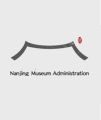Jiangning Imperial Silk Manufacturing
From the 2nd year of the reign of Qing Emperor Shunzhi (1645) when Jiangning Imperial Silk Manufacturing Bureau resumed production to the 30th years of the reign of Qing Emperor Guangxu (1904) when the bureau was dissolved, the bureau existed for 260 years, almost as long as the duration of the entire Qing dynasty. It witnessed the rise and fall of the dynasty. The vicissitudes of the Cao family, however, during their nearly 60 years of service at the bureau have interested people of later generations the most. Jiangning Imperial Silk Manufacturing Bureau had its heyday after Qing emperors stayed here on their southern inspection tours, leaving people in later generations marveling at the one-time prosperity of the bureau. The looms at that time created the peak and splendor of the Chinese Yunjin brocade craft. The bureau once held an important position in the political life of the Qing dynasty. As chiefs of the bureau were usually trusted followers of Qing emperors, they, while managing the silk manufacturing affairs, were often made to also manage salt and tax affairs, collect local political intelligence, and spy on local officials. The nearly 200 precious cultural objects and historical materials, in various exhibition forms, demonstrate the rise and fall of the bureau, as well as its historical status and function, especially its special position in the Jiangning region. The exhibition also tries to explore the rich cultural and historical connotations behind the bureau’s prosperity.
